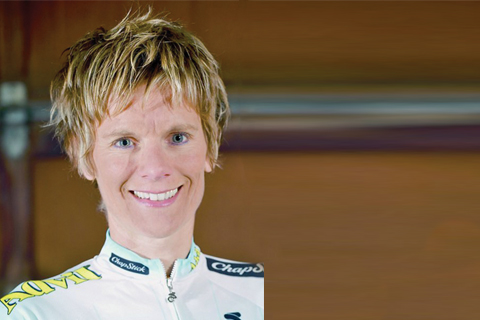Changing it up on the Bike

We all have a favorite hat, worn over the years to a supremely perfect fit. We periodically search for a replacement, bring it home, but find it’s just not quite right. It’s the same for workouts. We have favorites that we like to stick with, year after year. With a little bit of guidance, though, you can enjoy something new. You can find a new workout that offers both mental and physical stimulation and benefits your training.
Cycling offers plenty of options that you can explore. Two “new hat” ideas you might try are 1) training on a different bike and 2) training at a different rpm (revolutions per minute—how fast you turn the pedals around).
Your Bike
Triathletes do not need to train exclusively in the aero position on their triathlon-specific bikes. Yes, this has its time and place, but those who also train on a road bike benefit by improving both their bike handling skills and the quality of their training. Specifically, triathlon and road bikes have different geometries, which result in different positions for the rider. In addition, most triathletes modify their bikes with the addition of aerobars, which allow the rider to get in a more streamlined position, further changing body position.
Riding in a large group on a road bike in close proximity teaches you the fundamentals of keeping smooth on the bike, and you can’t do this safely while you’re in aerobars. Group riding, or pace line riding, teaches you how not to overreact to situations because your primary objective is to keep things rolling smoothly in the group. If you slam on your brakes with someone right behind you, that rider will not be happy! Knowing how to stay smooth in a group is a benefit on race day because you are efficient on the pedals and not braking unnecessarily. The more experience you have at road riding, the more relaxed and confident you become on the bike, and a triathlete with good bike-handling skills has a great advantage over his/her competitors.
Beyond handling skills, group rides offer a huge training benefit both for endurance riding and interval training. Your ability to stay in someone’s draft can make all the difference in whether or not you ‘hang’ with the group. Hanging with the group usually translates to getting a great workout. Austin has many group rides to choose from if threshold or high intensity work is your plan for the day, and you can sometimes discover new levels of heart rate limits when trying to hang with some of them!
Triathletes can also benefit from riding a mountain bike; the skills gained are immediately applied to your primary bike. Mountain biking forces you to be aware of how balancing and shifting your body weight can affect bike handling. While the Austin area has plenty of technical trails that can be intimidating and dangerous, beginning on an easy trail is the way to go. Slaughter Creek or Walnut Creek are great trails to start on, while more challenging trails can be found on the Barton Creek green belt. Mountain bike riding improves your strength and is great high-intensity training.
Your RPM
Being efficient on the bike is all about your rpm. If you are not already doing rpm-specific work in your training, you need to. Training has progressed from the days of heading out the door and maintaining 90 rpm for the entire ride. Now we know that spending time above and below your normal rpm dramatically improves your fitness on the bike. Workouts can be arranged in many different ways, but the main approach is simply to vary your rpm. For example, spend ten minutes alternating between high (over 100) and low (less than 75) rpm every minute. You can do this workout on any of the bikes I’ve mentioned (time trial/triathlon, road, or mountain bike).
A strength-specific workout is another way to do rpm work. Strength training is something we all consider for the off-season. “Old hat” is heading to the gym for strength training. “New hat” is working on cycling-specific strength while on your bike. For example, the workout can be 8 x 2-minute intervals on an easy-grade hill at 55-65 rpm, with 2 minutes rest, thus working with resistance rather than avoiding it to keep to our usual rpm.
So toss out some of the “old hat” ways and try some of the “new hat” techniques by exploring a new bike and pedaling speed. You’ll discover that not only does it fit into your current regime, but the new skills you acquire by doing so will bring your fitness to a whole new level.
Jen's Bio
Jen McRae is a professional cyclist currently racing with Team 787. Since 2005, McRae has had several podium finishes at the United States Criterium National Championships. In addition to professional racing, McRae is a cycling coach for Chann McRae Coaching, which provides training for cyclists and multi-sport athletes. Jen coaches the juniors on the 787 team of which her daughters, Henna(10) and Elle(8), are members. Jen also teaches cycling classes at Pure Austin Gym.






